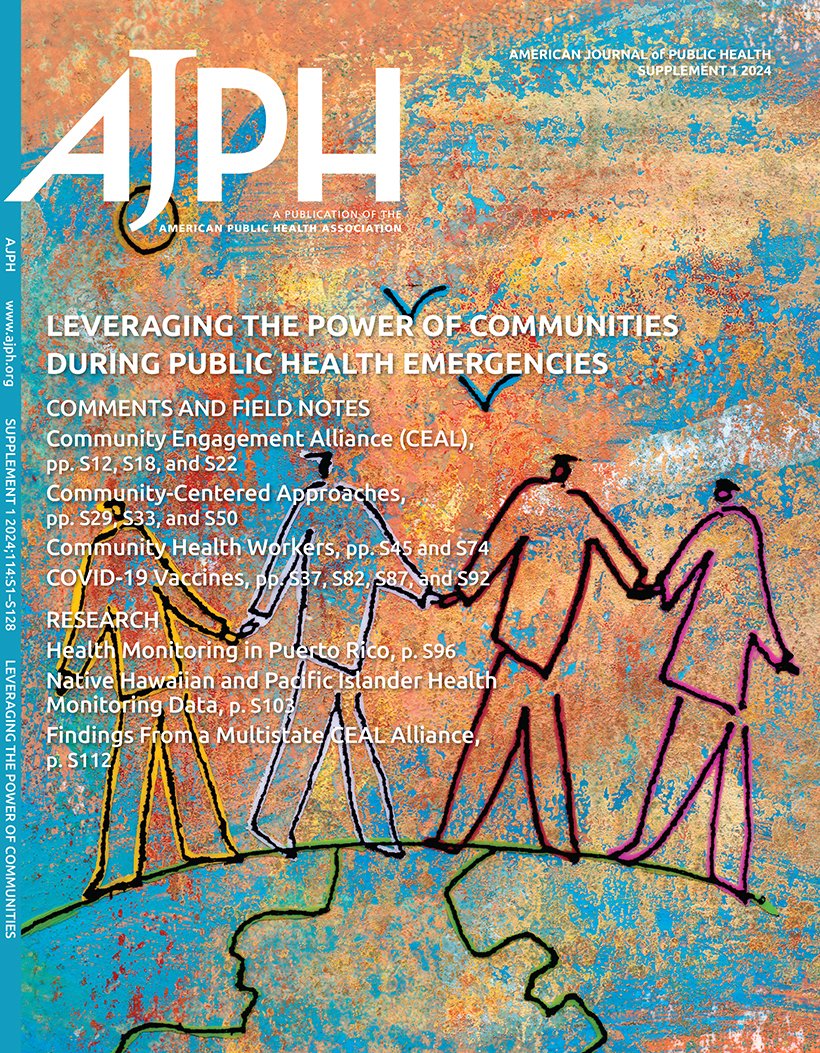Multiple Social Demographics and Disparities in Smoking Cessation During Pregnancy in the United States, 2016-2022: An Intersectional Analytic Framework.
IF 9.6
1区 医学
Q1 PUBLIC, ENVIRONMENTAL & OCCUPATIONAL HEALTH
引用次数: 0
Abstract
Objectives. To examine how multiple social demographics shape disparities in smoking cessation during pregnancy in an intersectional analytic framework. Methods. We analyzed US National Vital Statistics System (2016-2022) data on 588 435 primiparous women with prepregnancy smoking. We constructed 192 intersectional strata to represent contexts defined by race/ethnicity, education, marital status, insurance status, and immigration status. We conducted a multilevel analysis of individual heterogeneity and discriminatory accuracy to estimate intersectional inequities in smoking cessation during pregnancy, predict cessation prevalence across strata, and assess the extent to which disparities were attributable to additive or interaction effects. Results. Smoking cessation during pregnancy prevalence ranged from 27.2% to 89.4% across strata. Differences between intersectional strata explained 11.9% of the variation in smoking cessation, with educational level contributing most. Of the between-strata variation, 93.9% was explained by additive effects, whereas 6.1% was attributable to interaction effects. Conclusions. Significant disparities in pregnancy smoking cessation are linked to multiple social demographics, highlighting the need for universal interventions paired with tailored support for disadvantaged groups to advance maternal health equity. (Am J Public Health. Published online ahead of print September 18, 2025:e1-e11. https://doi.org/10.2105/AJPH.2025.308237).2016-2022年美国怀孕期间戒烟的多重社会人口统计和差异:一个交叉分析框架。
目标。在交叉分析框架中研究多种社会人口统计如何影响怀孕期间戒烟的差异。方法。我们分析了美国国家生命统计系统(2016-2022)中588435名怀孕前吸烟的孕妇的数据。我们构建了192个交叉层来代表由种族/民族、教育、婚姻状况、保险状况和移民身份定义的背景。我们对个体异质性和歧视性准确性进行了多水平分析,以估计怀孕期间戒烟的交叉不平等,预测各阶层的戒烟患病率,并评估差异可归因于加性或相互作用的程度。结果。各阶层的怀孕期间戒烟率从27.2%到89.4%不等。交叉阶层之间的差异解释了11.9%的戒烟差异,其中教育水平贡献最大。层间变异中,加性效应占93.9%,互作效应占6.1%。结论。怀孕期间戒烟方面的巨大差异与多种社会人口统计数据有关,突出表明需要采取普遍干预措施,同时为弱势群体提供量身定制的支持,以促进孕产妇保健公平。公共卫生。2025年9月18日提前在线发布:e1-e11。https://doi.org/10.2105/AJPH.2025.308237)。
本文章由计算机程序翻译,如有差异,请以英文原文为准。
求助全文
约1分钟内获得全文
求助全文
来源期刊

American journal of public health
医学-公共卫生、环境卫生与职业卫生
CiteScore
9.50
自引率
3.90%
发文量
1109
审稿时长
2-4 weeks
期刊介绍:
The American Journal of Public Health (AJPH) is dedicated to publishing original work in research, research methods, and program evaluation within the field of public health. The journal's mission is to advance public health research, policy, practice, and education.
 求助内容:
求助内容: 应助结果提醒方式:
应助结果提醒方式:


